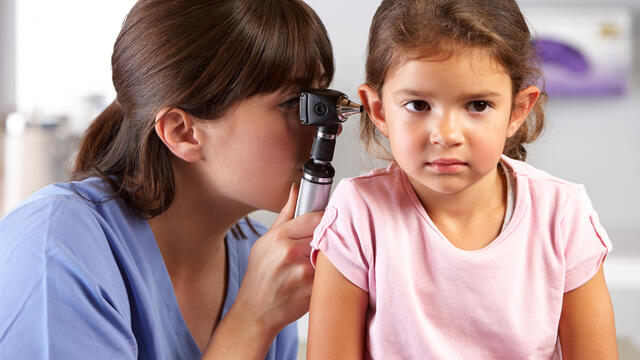Nutrition, Physical Activity and Obesity: School Initiatives
You can view the briefs based on our work about providing Safe Routes to School as well as Supporting Healthy Beverage Choices In Out-of-school Time Programs In Wisconsin.
Schools overview
The school setting is a prime location for improving eating habits and increasing physical activity. Schools have direct contact with more than 95 percent of Wisconsin's young people, for about eight hours a day. Establishing healthy behaviors during childhood is easier and more effective than trying to change unhealthy behaviors during adulthood.
Listed in this section are links to information and references to address physical activity and nutrition in the school setting. Strategies include different ways to integrate physical activity and nutrition into the school day such as setting up a Safe Routes to School or School Breakfast program.
#2 Nationally for Comprehensive School Physical Activity
Wisconsin is ranked #2 in the nation in implementing comprehensive physical activity program strategies in schools (72% towards full implementation of key strategies). See the Active Schools: Core 4+ section for more information on how to implement the strategies.
SOURCE: Based on the 2014 School Health Profiles Report, Center for Disease Control and Prevention.
Almost half (49%) of Wisconsin schools choose not to sell unhealthy foods and beverages such as soda, baked goods, and candy. The number of schools choosing not to sell unhealthy foods has doubled since 2008 (24%).
Source: 2016 School Health Profiles Trend Report, Wisconsin Department of Public Instruction.
Schools and the Wisconsin Chronic Disease Prevention Program
School efforts
The Wisconsin Chronic Disease Prevention Program (CDPP) does the following related to schools:
- Provides resources and technical assistance to communities looking to create healthier school environments. This includes web resources, training opportunities and direct assistance to communities, usually through partner work with the Department of Public Instruction (DPI).
- Provides leadership in convening and coordinating efforts by various groups working in one or more of the key strategy areas.
- Identifies and matches up existing resources of state agencies, non-profit organizations and other groups already working in this area.
Projects and strategies
- Increase the number of Wisconsin schools implementing environment and policy change strategies to support healthy eating and physical activity.
- Promote the Wisconsin School Health Award as a stepping stone to a healthier school environment.
- Promote Active Schools: Core 4+ implementation in coordination with DPI.
- Increase standards-based teaching in Physical Education in grades K-12.
- Provide opportunities for at least 60 minutes of physical activity per day for all school-age children.
- Increase the nutritional quality of Wisconsin school meal programs (school breakfast, lunch, summer feeding, and after school).
- Decrease access to energy-dense foods and sugar-sweetened beverages in schools.
- Increase standards-based nutrition education in grades K-12.
- Increase access to fresh fruits and vegetables for school-aged children.
What Can I Do?
Not sure of the role you could play in implementing school strategies?
Take a look at this listing of "What Can I Do?", P-00507 (PDF), by type of organization or increase nutrition and physical activity Infrastructure as outlined in the State Plan.
For specific School strategies, P-005075-4 (PDF) or for general strategies to increase physical activity.
Physical activity resources
The many aspects of an active community initiative are incorporated within the Active Schools: Core 4+. Read about how the Chronic Disease Prevention Program worked with the DPI and schools for New Connections to Better Health, P-01849 (PDF). Related resources located on the DPI website include an overview and how-to videos for each strategy, as well as written materials.
Active Out-of-School Time (PDF) – This guide is designed to help OST professionals address childhood obesity by improving physical activity.
Wisconsin Model Academic Standards for Physical Education (PDF) - These standards provide consistent, developmental guidance for curriculum, instruction, and assessment in PK-12 physical education.
Safe Routes to School national resources help make communities and schools safer, healthier and more active.
Nutrition resources
Wisconsin Model Academic Standards for Nutrition Education (PDF) - These standards help set the bar for high-quality, comprehensive nutrition education across the state of Wisconsin
Got Dirt? Garden Toolkit is designed to provide simple, step-by-step plans for starting a garden.
Got Veggies? P-00228 is a garden-based nutrition education curriculum created with the goal of getting children to eat more fresh fruits and vegetables.
Success Stories
Wisconsin Success Stories (PDF) - Seven success stories from schools across the state using physical activity strategies developed as part of a multi-year cooperative agreement between the Department of Health Services and the Department of Public Instruction. See what innovative things are happening to increase physical activity in Wisconsin schools.
La Crosse Farm to School (Video) - "Kids cheering for vegetables? Farm to school works!" Gundersen Lutheran Certified Executive Chef Thomas Sacksteder conducts cooking classes as part of the La Crosse County Farm2School initiative.
Links to other settings
Active Communities
Learn about efforts to increase physical activity in local communities
Early Care and Education
Find tools and resources that help improve physical activity and nutrition in early childhood settings.
Food System
Find information and resources that address nutrition needs in local communities.
Health care
Find resources can help providers address physical activity and nutrition in health care settings.
Worksites
Explore out Worksite Wellness Resource Kit that can help you build a healthy workforce. It offers methods proven to be effective.










